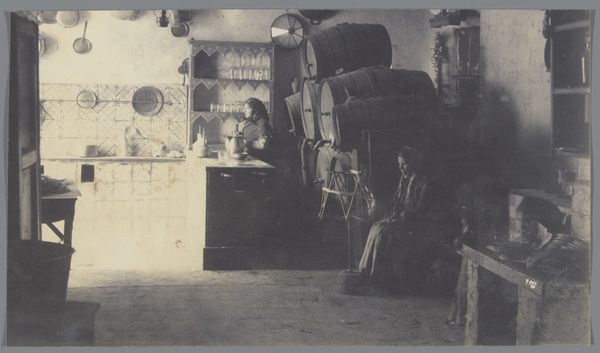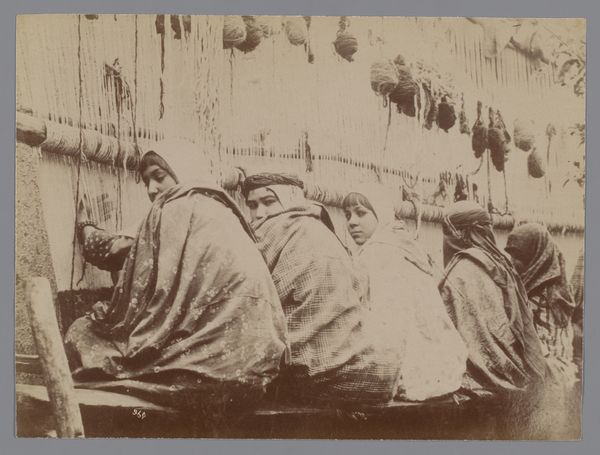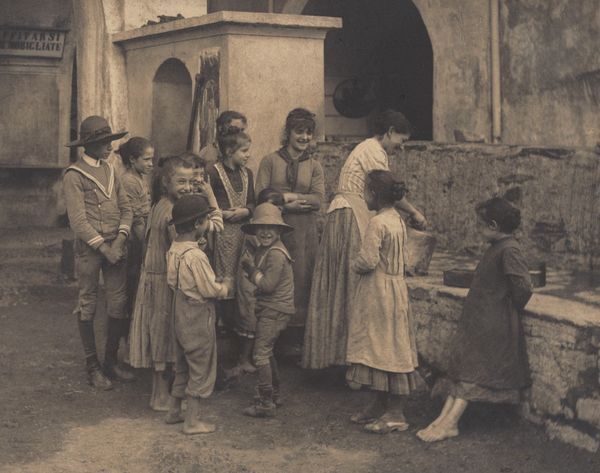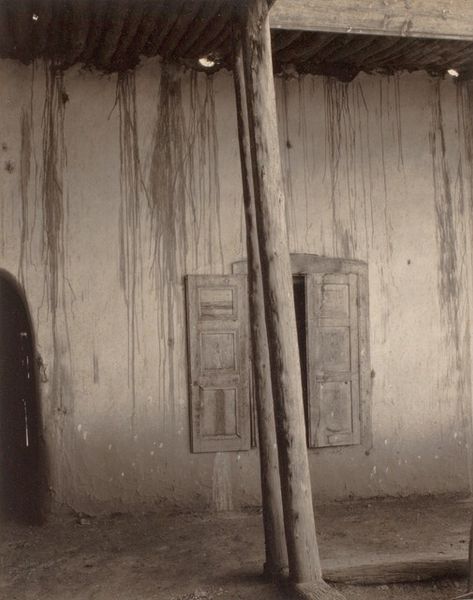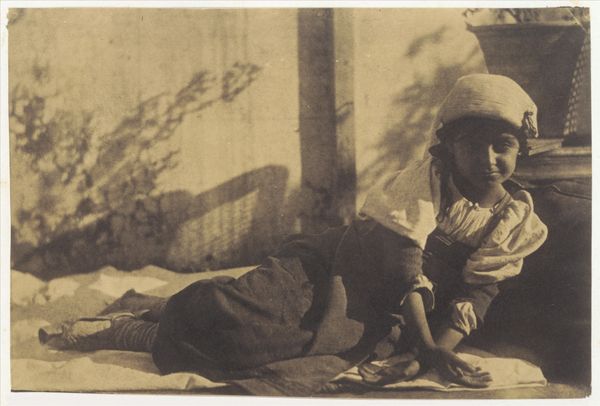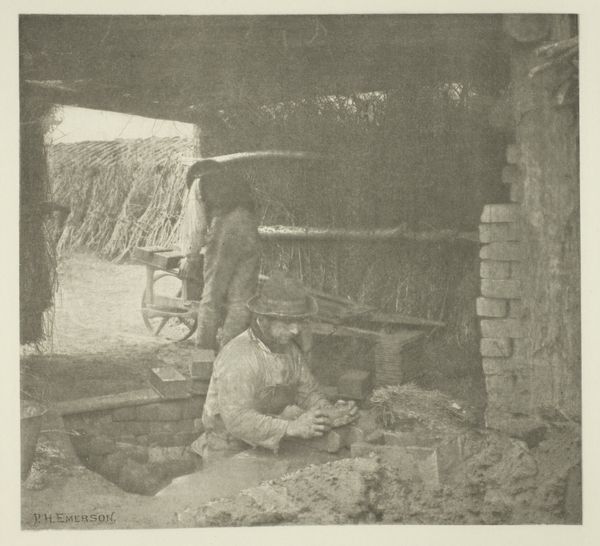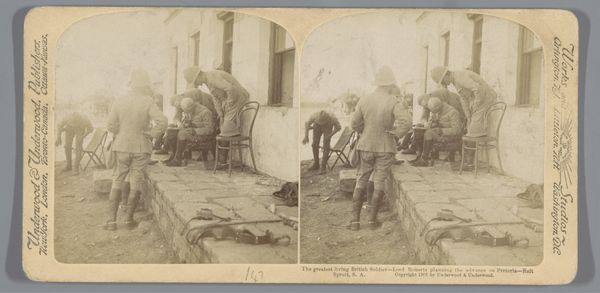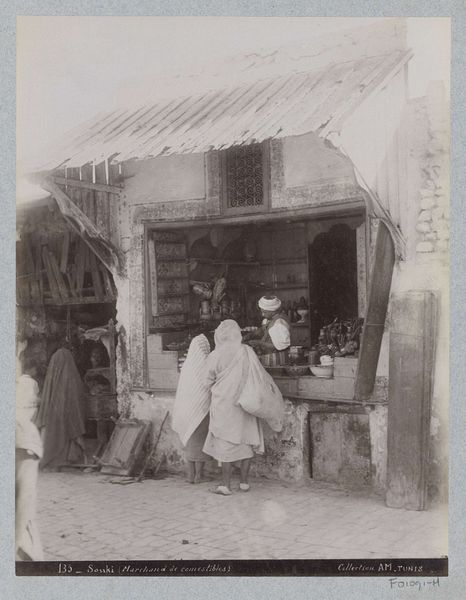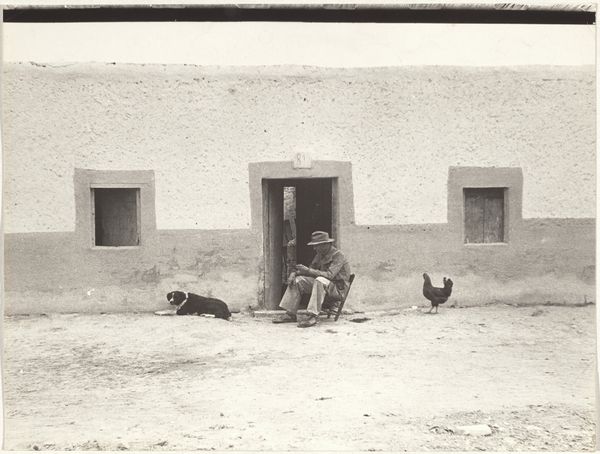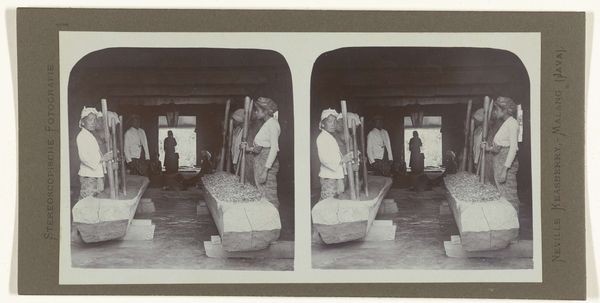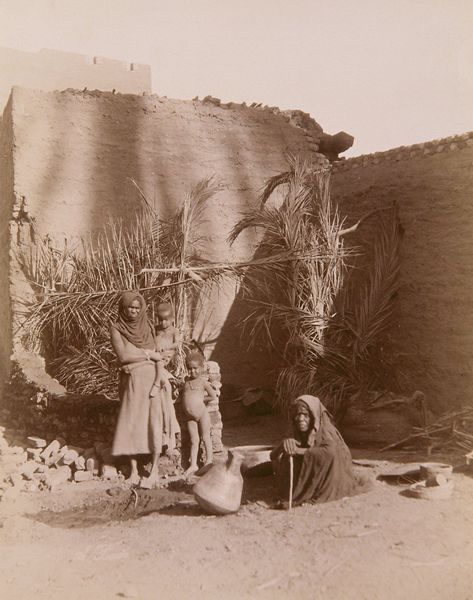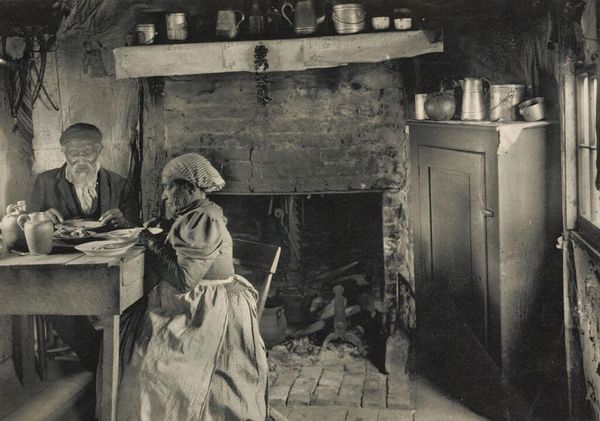
photography
#
portrait
#
sculpture
#
social-realism
#
archive photography
#
photography
#
historical photography
#
monochrome photography
#
genre-painting
#
monochrome
Copyright: National Gallery of Art: CC0 1.0
Curator: Here we have Robert Frank's "Peru, page 36," a photograph from 1948. Frank, known for his raw and immediate style, captured this image during his travels. Editor: My first thought? The light! It feels gritty, honest. Like eavesdropping on a secret gathering. You can almost hear the drums, see the dust motes dancing in the light. Curator: Indeed. Frank often sought out such unfiltered moments. His work, especially during this period, challenged the polished image of postwar society, opting instead to portray everyday life, particularly of marginalized communities. Editor: Marginalized maybe, but not voiceless! Look at the faces; they're not posing for some official portrait. They are in the moment with each other, creating music. Look at that chipped wall in the background too. Perfect backdrop, no pretense, and you get the context instantly. Curator: The social realism inherent in Frank’s approach is vital to consider, don't you think? This is more than a snapshot; it’s a visual document reflecting socio-economic conditions of Peru. Editor: Visual poem, maybe? Frank turned the ordinary into extraordinary by how close and personal his work looks, almost as though you're experiencing something yourself. I mean, what's happening beyond the shattered window looks important but you can't really tell what. This gives it a mystery and immediacy that some photographers might miss. Curator: Robert Frank was often accused of favoring aesthetics over truth, particularly in his earlier works. There was always some debate surrounding whether these works could really be trusted to document what life was really like. Editor: Sure, truth can be subjective, filtered by our own biases. Still, I find his stark, simple frame more honest than any overtly polished documentary propaganda that you'd expect around the period of 1948. It cuts through to something…authentic. Curator: Perhaps "authentic" is a useful approximation, though "mediated reality" may serve us better, as a guiding lens. Anyway, thanks for joining me as we explored this insightful image. Editor: Yeah! "Peru, page 36". Feels a little more seen somehow, just by chatting. Good stuff.
Comments
No comments
Be the first to comment and join the conversation on the ultimate creative platform.
